
Kolkata, also known as Calcutta, is the capital and largest city of the Indian state of West Bengal. It lies on the eastern bank of the Hooghly River, 80 km (50 mi) west of the border with Bangladesh. It is the primary financial and commercial centre of eastern and northeastern India. Kolkata is the seventh most populous city of India with an estimated city proper population of 4.5 million (0.45 crore). It is the centre of the Kolkata Metropolitan Region, one of the most populous metropolitan areas in the world with a population of over 15 million residents. Kolkata is the regarded by many sources as the cultural capital of India and a historically and culturally significant city in the historic region of Bengal. It is the second largest Bengali-speaking city in the world. It has the highest number of Nobel laureates among all cities in India.

UCO Bank, formerly United Commercial Bank, is an Indian public sector bank, and financial services statutory body headquartered in Kolkata. UCO Bank is the 10th largest public sector bank in India by total asset and ranked 1948 in Forbes Global 2000 list of year 2018 & ranked 80 on the Fortune India 500 list in 2020. During FY 2023–24, its total business was ₹4.50 lakh crore. The market capitalisation of bank is ₹71,078 crore (2024).

Transport in Chennai includes various modes of air, sea, road and rail transportation in the city and its suburbs. Chennai's economic development has been closely tied to its port and transport infrastructure, and it is considered one of the best infrastructure systems in India.

Sealdah Railway Station is one of India's major railway terminals serving the city of Kolkata. It is the second largest railway station in India and West Bengal in terms of platforms, tracks and overall daily passenger holding capacity. The other main railway stations in the Kolkata metropolitan area are Howrah, Shalimar, Kolkata and Santragachi. Over 1.5 million passengers use the station daily. It is an important suburban rail terminal. Kolkata Metro Line 2 passes through Sealdah with the new underground Sealdah metro station.

Tollygunge is a locality of South Kolkata, in West Bengal, India. It is known for being the center of Indian Bengali-language cinema, with filming locations used for other regional Indian films.
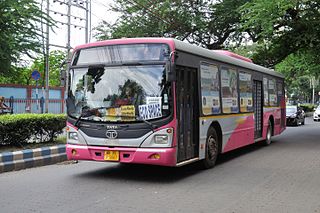
The transport system of Kolkata, a city in India, is a mix of modern mass rapid transport and old transport modalities like rickshaws. Kolkata is connected to the rest of India by the National Highways, the extensive network of the Indian Railways, National Waterways and by air. The most traffic to Northeast India route is via Kolkata.

Port of Kolkata or Kolkata Port, officially known as Syama Prasad Mookerjee Port, is the only riverine major port in India, in the city of Kolkata, West Bengal, around 203 kilometres (126 mi) from the sea. It is the oldest operating port in India and was constructed by the British East India Company. Kolkata is a freshwater port with no variation in salinity. The port has two distinct dock systems – Kolkata Dock at Kolkata and a deep water dock at Haldia Dock Complex, Haldia.

Khidirpur or Kidderpore is a neighbourhood of South West Kolkata in Kolkata district in the Indian state of West Bengal.
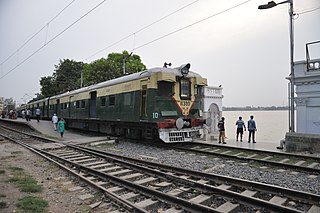
Kolkata Circular Railway, also known as the Kolkata Chakra Rail, is a 36.20 km (22.49 mi) long railway loop line operated by the Sealdah division of the Eastern Railway zone of Indian Railways, encircling the city of Kolkata.
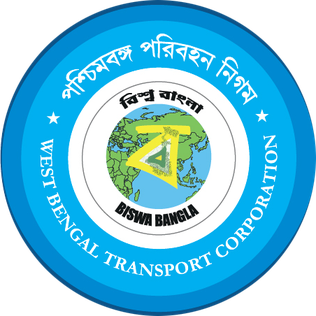
West Bengal Transport Corporation (WBTC) is a West Bengal state government undertaken corporation. It plies buses, trams and ferries in the state. It was formed by merging existing state transport agencies, namely the Calcutta State Transport Corporation, the Calcutta Tramways Company and the West Bengal Surface Transport Corporation.

Calcutta Tramways Company (CTC) was a state-run company that operated trams and buses in and around Kolkata in West Bengal, India. The Kolkata tram is the only operating tramway in India and is the oldest electric tram in India, operating since 1902.

Kankurgachi is a neighbourhood of North-East Kolkata, in Kolkata district, West Bengal, India. With a cosmopolitan crowd and several commercial buildings and restaurants, Kankurgachi is considered one of the upmarket and elite places in Kolkata. Kankurgachi has become a very important part of Kolkata for its excellent connectivity and infrastructure. Kolkata Airport, Bidhannagar Road railway station, Salt Lake and New Town are close to Kankurgachi.
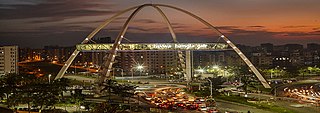
The economy of West Bengal is a mixed middle-income developing social market economy and the largest Eastern Indian economy with a substantial public sector. It is the India's sixth-largest economy by nominal GDP.
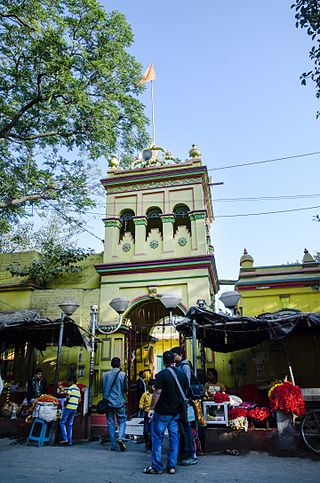
Kashipur is a neighbourhood of North Kolkata, in Kolkata district in the Indian state of West Bengal. One of the oldest neighbourhoods of the metropolis, it has a police station.
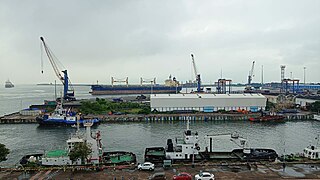
Paradip Port is a natural, deep-water port on the East coast of India in Paradip, just 53 km (33 mi) from Jagatsinghpur city in Jagatsinghpur district of Odisha, India. It is at the confluence of the Mahanadi river and the Bay of Bengal, 210 nmi south of Kolkata and 260 nmi north of Visakhapatnam.

Netaji Subhas Road, previously known as Clive Street, is an important thoroughfare in Central Kolkata that runs predominantly north to south in the B. B. D. Bagh neighborhood of Kolkata.

Sealdah railway division is one of the four railway divisions under the Eastern Railway zone of the Indian Railways. Its headquarters is located in Kaiser Street in Kolkata, West Bengal near the Sealdah railway station. Geographically the division covers the railway tracks and services in the areas between the Hooghly river on the west, Bangladesh on the north and east and the Sundarbans in the south.

The Haldia Port, officially Haldia Dock Complex (HDC), is a port on the confluence of the Haldi River and the Hooghly River. The port is located at Haldia in West Bengal, about 130 kilometres (81 mi) from the sandheads–deep sea area of the Bay of Bengal, 45 kilometres (28 mi) upstream from Pilotage Station at Sagar and 104 km downstream of Kolkata. In 1968, an oil jetty was commissioned at Haldia, and officially in 1977 the port facility of Haldia started functioning as a subsidiary port of the Port of Kolkata under the name Haldia Dock Complex.
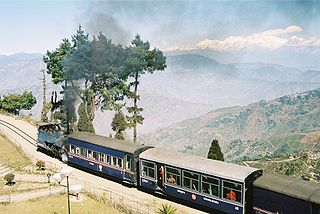
Total length of road in West Bengal is 92,023 kilometers. Among these national highway are 2,377 kilometers, and state highway 2,393 kilometers. The road density of the state is 103.69 kilometers per 100 square kilometers ; the national density is 74.7 kilometers per 100 square kilometers. The average speed of the road in the state is between 40 and 50 kilometers/hour. The speed in the village and urban areas is between 20 and 25 kilometers/hour. This is the main reason the road is low and lack of maintenance. The total length of the railway line in the state is 3,825 kilometers. Indian Railways' Eastern Railway zone and South Eastern Railway zone Headquarter are located in Kolkata. The railways on the north side of the state Under the Northeast Frontier Railway. Kolkata Metro is India's first underground metro rail service. The Darjeeling Himalayan Railway, part of the Northeast Frontier Railway, is a UNESCO World Heritage Site.
FinTech Hub is a financial, commercial centre and business district located in New Town city, which lies outskirts of Kolkata under its metropolitan area in the state of West Bengal, India. The hub has the presence of a large number of banking, financial companies and legal institutions. Many major companies have their headquarters, offices and training centres operational or under construction.






































